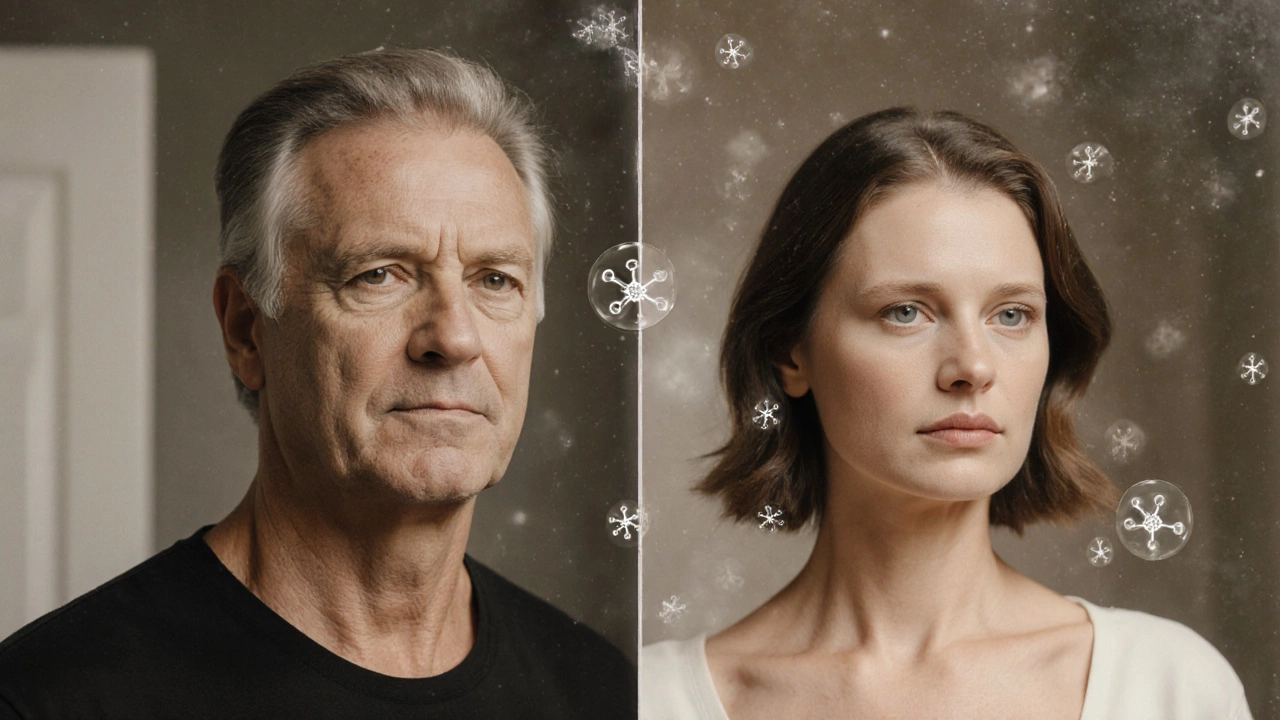Age Related Hair Loss: What Happens and How to Respond
When dealing with age related hair loss, the gradual thinning of hair that commonly appears as people get older, often driven by genetics and hormone shifts. Also known as age‑associated hair loss, it affects both men and women worldwide.
It is a specific form of hair thinning, the reduction in hair strand density that can be diffuse or patchy and usually signals underlying hormonal changes, fluctuations in estrogen, testosterone or thyroid hormones that alter the hair growth cycle. Age related hair loss encompasses hormonal changes, genetics and lifestyle factors, while effective scalp care requires good nutrition and low‑stress habits. Maintaining good scalp health, the condition of the skin on the head that supports follicle function is a key preventive step because a healthy scalp creates a fertile environment for any remaining follicles.
Key Factors, Practical Steps, and Treatment Options
The most common cause is genetics paired with age‑driven hormonal shifts, but other contributors include poor diet, chronic stress, and certain medications. Each factor influences the hair cycle in a measurable way: low iron or protein speeds up the telogen (resting) phase, while excess DHT from testosterone accelerates follicle miniaturization. To counteract these effects, start with a balanced diet rich in zinc, biotin, and omega‑3 fatty acids; they supply the building blocks follicles need to stay robust. Regular scalp massage boosts circulation, which in turn supports nutrient delivery to hair roots.
When lifestyle tweaks aren’t enough, proven treatments step in. Topical minoxidil expands blood vessels, giving follicles more oxygen. Oral finasteride blocks the conversion of testosterone to DHT, slowing down follicle shrinkage in men. For those seeking non‑pharmaceutical routes, low‑level laser therapy and platelet‑rich plasma (PRP) injections have shown measurable density gains. Hair transplantation remains the definitive surgical option, but it works best when scalp health is already optimized.
Styling choices also matter. Selecting gentle, volumizing cuts and avoiding tight ponytails reduces mechanical stress that can aggravate thinning areas. Light‑weight, protein‑based conditioners keep hair shaft strength without weighing it down. These practical habits, combined with targeted treatments, create a multi‑layered approach that addresses the root causes rather than just the symptoms.
Below you’ll find a curated collection of articles that dig deeper into each of these topics – from nutrition tips and scalp‑care routines to detailed reviews of the latest hair‑loss products and styling tricks for thinning hair. Explore the posts to get actionable advice you can start using today, whether you’re looking to prevent further loss or simply want to make the most of the hair you have.
Stop Age‑Related Hair Thinning: Proven Tips & Treatments
Learn practical steps, nutrients, and treatments to prevent age‑related hair thinning and keep your hair looking fuller.
